Types of aquascaping tools (scissors, tweezers,…) and usage guide
Whether you’re an experienced aquascaper or just looking to start out in this fascinating and addictive hobby, you’re going to need a few basic tools to help you build and maintain your planted tank. It can be intimidating when standing in your local fish keeping store, looking at all the shiny instruments and not knowing what they’re for or which one to choose. In this guide, we’ll go through a few of the most important tools to make your hobby easier and more enjoyable.
- Types of aquascaping tools
- What Size Tools Do I Need?
- Best planted aquarium tool kits
- Frequently Asked Questions
- Conclusion
Types of aquascaping tools
Scissors For Trimming Aquarium Plants
Some plants are slow-growing and require very little maintenance, whereas some aquascapes, especially those with strong lighting, and carpet plants will require frequent and regular trimming to keep them looking pristine.
The type of scissors you select will depend on a few factors:
- Type of plant
- Density and complexity of your aquascape
- Type of cut you wish to make
- Depth of your fish tank
Straight Scissors
For precise cuts in densely planted tanks, you can’t beat a good quality pair of straight aquarium scissors. Because of their straight profile, these scissors will not damage or disturb other plants and features surrounding your target plant.
You can use your straight aquascaping scissors for making vertical cuts on stem plants like Rotala, and they are also a good option for trimming tall plants in the upper levels of your aquarium.
Curved Scissors
 9.8 inch curved scissors in Segarty tool kit #ad
9.8 inch curved scissors in Segarty tool kit #ad
Curved scissors are essential for work at the lower and substrate levels of your aquascape. Trimming and pruning spreading plants in the foreground and background of your planted tank will be much easier since horizontal cuts with your straight scissors would require you to suspend your hand into the water and to the bottom of the tank, potentially disturbing your plants or hardscape.
Wave Scissors
These scissors have been designed specifically for maintaining carpet plants in the aquascape. If you wish to achieve a beautiful carpet of dwarf hair grass (Eleocharis spp.), or glosso (Glossostigma elatinoides) for example, regular trimming will be necessary.
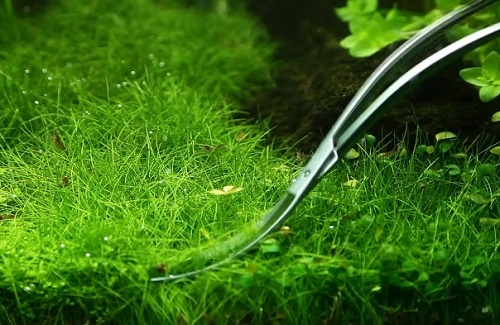
Trimming dwarf hairgrass with wave scissors
Double curved scissors allow you to make perfect cuts, parallel with the substrate, all while keeping your hands above the plants to minimize disturbance.
Spring Scissors
Spring scissors are very handy for very fine, detailed work like moss trimming where long aquarium scissors may be too clumsy, especially for mosses grown on hardscape features like driftwood.
Tweezers For Planting Aquarium Plants
The best tools for planting substrate rooted plants are tweezers and pinsettes. The style of tweezers you select will depend on what you’re going to use them for. Important features of a good pair of aquascaping tweezers include:
- Comfortable grip
- Quality stainless construction
- Corrugated inner surface for a firm grip on plants and other objects
- Tips that meet perfectly
Straight Tweezers
 12-inch stainless steel straight tweezers #ad
12-inch stainless steel straight tweezers #ad
Many aquatic plants grow best when rooted in a good quality substrate. The best way to root these plants is to push them into the substrate to the right depth using specially designed aquarium tweezers. In the case of grasses like Vallisneria, straight tweezers are most useful since the plant can be gripped and inserted with the tweezers held almost vertically.
Generally, the tweezers and plant should be inserted into the substrate vertically to avoid disturbing the surrounding substrate and plants, and because it is far easier. Straight aquascaping tweezers are not only useful for planting, however, they can also be used for removing snails and other small objects.
Curved Tweezers
 10.6-inch curved tweezers in a tweezers set #ad
10.6-inch curved tweezers in a tweezers set #ad
Plants with bushier growth forms, such as amazon swords (Echinodorus) are more difficult to plant with straight tweezers and for this reason, tweezers with an offset tip section are more useful.
These curved tweezers keep your hand out of the way and make it possible to root your plants perfectly straight without disturbing the surrounding substrate and plants.
Pinsettes
These very fine-tipped tweezers are necessary for precise work like high-density plantings in the foreground of your aquascape or between rocks and other hardscape features.
Tiny plants like dwarf baby tears (Hemianthus callitrichoides) which require careful planting when used for foreground substrate planting will be much easier to work with using a fine pair of pinsettes.
Having a fine instrument like this can also be used to help release gas pockets from deep substrate beds or for inserting root tabs into the root zone of your plants without damaging them.
Aquascape cleaning and maintenance tools
Substrate spatula / flattener
Use your substrate spatula for flattening the substrate in your hardscape. Often your substrate can become disturbed during planting and trimming, and especially during water changes and vacuuming operations.
Slopes in finer substrates in particular can level out over time, and this is where your spatula can really come in handy during maintenance.
Another use for a spatula is to ‘dust’ off sand particles kicked up onto your plants during cleaning and maintenance. Simply wave the spatula over the plants to achieve this effect, without actually making contact with them or the substrate.
Algae glass scraper
 Aquarium Scraper Cleaner Brush #ad
Aquarium Scraper Cleaner Brush #ad
Controlling algae in your planted aquarium is a necessary part of your maintenance routine. Although algae is a natural and often healthy component of our aquatic ecosystems, it can be unsightly and even harmful if left to grow out of control.
Healthy, well-planted aquascapes with appropriate lighting, CO2 levels, and fertilizer will have limited algal growth once your plants are established and in competition with the algae for resources.
Fish net
 Penn Plax Aquarium Fish Net #ad
Penn Plax Aquarium Fish Net #ad
Most aquarium plant trimmings will float to the surface and can then be collected and removed. This can be quite a chore and the best way to collect these trimmings is with a small aquarium net. It’s good to have a small and medium-sized net for this.
A fine mesh is essential so that particles don’t simply wash through. Some clippings will stick to the glass and these can be loosened by hand before collecting them with your net. Allow the clippings and your net to dry before emptying it, to make your life a lot easier.
What Size Tools Do I Need?
A good general size for aquascaping tools is between 10″ and 15″ in length. Although you may still get your hands wet when working in deep aquariums, tools of this length allow you to keep your hands clear of the plants you are shaping or trimming.
Getting your hands a little wet is all part of keeping an aquarium, just remember to keep your hands clean and clear of any harmful chemicals before touching the water. It’s a good idea to do your trimming during your regular water changes when the water level is low.
You can also wear a pair of aquascaping gloves #ad if you want to keep your hands completely dry.
Best planted aquarium tool kits
Bornfeel 7 in 1 Aquascaping Tool kit

 Check on Amazon #ad
Check on Amazon #ad
- Ideal for: general purpose, trimming, planting, and substrate management
- Length: waved scissors- 9.4″, curved scissors-9.8″, straight scissors-10″, curved and straight tweezers-10″, sand spatula- 12.6″
- Material: Stainless steel
The Bornfeel 7 in 1 aquascaping tool kit is an excellent all-around set for maintaining your planted tank. This kit includes both straight and curved tweezers, straight, curved and wave scissors, and a sand spatula. The kit comes with a handy zip-up bag to keep your tools safe and organized.
Consider picking up a pair of pinsettes, spring scissors, a net, and an algae scraper (all sold separately) to complete this aquascaping toolset.
Liveek 4 in 1 Aquascaping Tool kit

 Check on Amazon #ad
Check on Amazon #ad
- Ideal for: general purpose, trimming, planting, and substrate management
- Size: straight and curved tweezers-10″, curved scissors- 10.5″, spatula- 12.5″
- Material: coated stainless steel
This kit from Liveek contains the basic tools needed for planted tank maintenance and includes a handy storage pouch with a drawstring. In this kit, you will find straight and curved tweezers, curved scissors, and a sand spatula.
These tools are made from quality stainless steel, with an additional spray-on coating for added protection against corrosion.
Lukovee 5 in 1 Aquascaping Tool kit

 Check on Amazon #ad
Check on Amazon #ad
- Ideal for: general purpose, trimming, planting, and substrate management
- Length: scissors- 9.8″, straight and curved tweezers- 10.6″, spatula- 12.4″, net-17.7″
- Material: scissors, tweezers, and spatula made from quality stainless steel
This kit from Lukovee includes straight tweezers, curved tweezers, a curved pair of scissors, a sand spatula, a net, and a storage bag to keep your tools in. This kit is useful for basic aquascaping and the included net is great for collecting the trimmings after cutting and shaping your plants.
Songway 5 in 1 Aquarium Plant Tool Kit

 Check on Amazon #ad
Check on Amazon #ad
- Ideal for: general purpose, trimming, planting, and substrate management
- Length: straight scissors and curved scissors – 10″, straight tweezer and curved tweezer – 10.6″, sand spatula 12.4″
- Material: stainless steel
The Songway 5 in 1 aquascaping tool kit includes both straight and curved scissors, straight and curved tweezers, and a substrate spatula. You can do most of your aquascaping work with these tools. The nice thing about this kit is the included zip-up case and tool rack for storing and organizing your aquascaping tools.
Frequently Asked Questions
How Should I Maintain My Tools?
Even though aquascaping tools are designed for use underwater, you should always dry them thoroughly before storing them after use. Tools that have any dirt or plant debris should also be thoroughly wiped off, rinsed, and dried before storage.
Where Should I Store My Tools?
Store your tools in a safe, dry environment, ideally in the same place where you keep the rest of your aquarium supplies so you always know where to find them. Aquarium aquascaping tool kits may come with a storage bag, or you can use an aquarium tool holder rack #ad to keep things organized.
Aquascaping tools are small, sharp, and often shiny implements. This is a dangerous combination for small children, so make sure to keep them in a secure and safe place, out of the reach of little ones.
Should I Sharpen My Tools?
Sharp scissors are very important for aquascaping. You want your scissors to make clean cuts, rather than tear, shred or snap your plants as this causes unattractive damage.
Your tools should come sharp enough for use ‘out-of-the-box’, but give them a tune-up where necessary. If you are not experienced in sharpening blades, curved scissors may present quite a challenge, and taking your tools to a professional or otherwise knowledgeable person is advised.
Is It Safe To Use Other Tools In The Aquarium?
It is better to use dedicated aquarium tools for working on your aquascapes, especially where livestock is involved. Harmful chemicals on household tools could be dangerous to the health of your pets.
You may not know what someone else has used a tool for before you, and items not designed for use in water may corrode or be otherwise damaged.
Conclusion
Creating a beautiful, living underwater landscape isn’t easy, this hobby takes time, effort, knowledge, and vision. Using the right tools for the job can make this pastime so much easier and more enjoyable. Use this information to get yourself the right tools and take your hobby to the next level.

 Straight Scissors #ad
Straight Scissors #ad Wave Scissors #ad
Wave Scissors #ad Spring Scissors #ad
Spring Scissors #ad Pinsettes #ad
Pinsettes #ad Substrate spatula #ad
Substrate spatula #ad
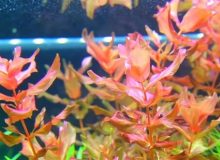
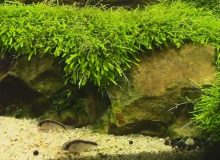
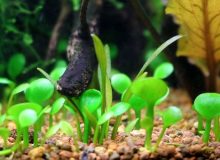
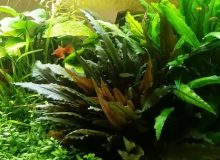
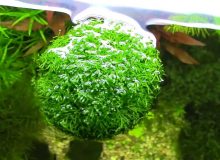
Leave a Reply